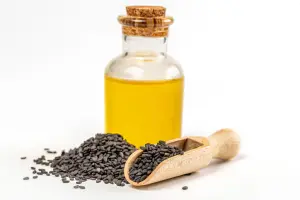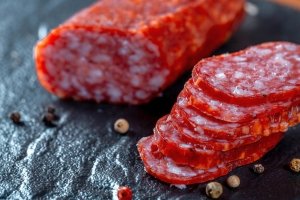For those who follow a vegan diet, have allergies, or simply run out of eggs, you can substitute plenty of creative and delicious other things for eggs
For those with egg allergies or who follow a vegan diet, finding a substitute for eggs in baking and cooking can be a real challenge. Eggs are a staple ingredient in many recipes, and their unique properties make them difficult to replace. However, with a little knowledge and experimentation, it is possible to crack the code and find the perfect substitutes for eggs in your favorite recipes.
In this blog post, we’ll explore the best alternatives to eggs, from flaxseed and applesauce to tofu and aquafaba. We’ll also discuss the properties of eggs that make them essential in cooking and how each substitute compares. So whether you’re vegan, have an egg allergy, or simply want to try something new, read on to discover the best substitutes for eggs in baking and cooking.
1. Why you might need a substitute for eggs in baking and cooking
Eggs are a staple ingredient in many baking and cooking recipes. They provide structure, moisture, and act as a binding agent. However, there are several reasons why you might need to find substitutes for eggs in your recipes.

Firstly, dietary restrictions or allergies can be a major factor. Many people have allergies to eggs or follow a vegan lifestyle, where they choose to exclude all animal products, including eggs, from their diet. Additionally, some individuals may have dietary restrictions due to health conditions or personal preferences.
Secondly, there may be instances where you simply run out of eggs. It can be frustrating to be in the middle of preparing a dish only to realize that you don’t have any eggs left. In such situations, having knowledge of suitable egg substitutes can save the day and prevent a trip to the grocery store.
Lastly, using egg substitutes can also be a way to experiment with new flavors and textures in your recipes. Some egg substitutes can add unique characteristics to your dishes, such as extra moisture, density, or even a different flavor profile.
By understanding the reasons why you might need substitutes for eggs in baking and cooking, you can be prepared to tackle any situation that calls for an egg-free alternative. Whether it’s due to dietary restrictions, running out of eggs, or simply wanting to explore new culinary possibilities, having a repertoire of suitable egg substitutes in your kitchen can be a game-changer.
2. The role of eggs in baking and cooking
Eggs have long been a staple ingredient in baking and cooking, providing structure, moisture, and richness to a variety of dishes. They act as binders, helping to hold ingredients together. They can also contribute to the overall texture and taste of the final product.
In baking, eggs are often used to add moisture and tenderness to cakes, cookies, and muffins. They help to create a light and fluffy texture, as well as adding richness and depth of flavor. Eggs also act as emulsifiers, helping to combine fats and liquids together, resulting in a smooth and cohesive batter or dough.
In cooking, eggs play a crucial role in dishes such as quiches, frittatas, and custards. They provide structure and help to set the dish, creating a creamy and velvety texture. Eggs also contribute to the overall flavor profile, adding a savory note to savory dishes and a touch of sweetness to desserts.
However, for various reasons such as dietary restrictions, allergies, or simply the desire to explore alternatives, many people are seeking substitutes for eggs in their baking and cooking endeavors. Thankfully, there are several options available that can mimic the functions of eggs and yield delicious results.
By understanding the specific roles that eggs play in different recipes, it becomes easier to identify suitable substitutes that can recreate similar outcomes. From mashed bananas and applesauce to silken tofu and flaxseed meal, these alternatives can be used in various quantities and combinations to achieve the desired texture, moisture, and binding properties.
Experimenting with these substitutes can open up a world of possibilities. It will allow individuals to create vegan, vegetarian, or allergy-friendly versions of their favorite recipes. It’s important to keep in mind that while these substitutes can work well in many instances, there may be some recipes where the unique properties of eggs cannot be fully replicated.
In the next section, we will explore some of the most common and effective substitutes for eggs in baking and cooking. It will providing you with valuable insights and practical tips to successfully crack the code and achieve culinary excellence without relying on traditional egg-based ingredients. So, let’s dive in and discover the exciting world of egg substitutes!
3. Vegan and plant-based egg substitutes
When it comes to vegan and plant-based cooking and baking, finding suitable substitutes for eggs can be a game-changer. Luckily, there are several options available that can mimic the texture, binding properties, and even the taste of eggs, without compromising on flavor or quality.
One popular egg substitute is applesauce. Not only does it add moisture to your baked goods, but it also acts as a binding agent. Applesauce works particularly well in muffins, cakes, and quick breads, giving them a soft and moist texture. Plus, it adds a subtle hint of sweetness that complements a variety of flavors.
Another versatile option is mashed bananas. With their natural sweetness and creamy texture, mashed bananas are an excellent substitute for eggs in recipes like pancakes, cookies, and brownies. They provide moisture and help bind the ingredients together, resulting in deliciously moist and tender treats.
For those looking for a more neutral substitute, flaxseed meal or chia seeds can be used as an egg replacement. By mixing either of these with water, you can create a gel-like mixture that functions as a binding agent. These substitutes work well in recipes like muffins, cookies, and even as a binder for veggie burgers or meatballs.
Silken tofu is another fantastic option, especially when a recipe calls for a large number of eggs. When blended until smooth, silken tofu creates a creamy consistency that works wonders in custards, puddings, and even quiches. Its mild flavor allows other ingredients to shine while providing the necessary moisture and structure.
Lastly, aquafaba, the liquid from canned chickpeas, has gained popularity as an egg substitute in recent years. This viscous liquid can be whipped into stiff peaks, just like egg whites. It is an excellent replacement for meringues, macarons, and even mayonnaise. Its unique properties make it a versatile ingredient that can be used in a variety of sweet and savory recipes.
With these vegan and plant-based egg substitutes, you can explore new culinary possibilities while accommodating dietary preferences and restrictions. Whether you’re a vegan, have an egg allergy, or simply want to reduce your consumption of animal products, these alternatives are sure to delight your taste buds and give your recipes a wholesome twist.
4. Common egg substitutes in baking
When it comes to baking, eggs play a crucial role in providing structure, moisture, and leavening. However, for those who follow a vegan lifestyle or have egg allergies, finding suitable egg substitutes can be a game-changer in the kitchen. Fortunately, there are several common ingredients that can effectively replace eggs in your baked goods without compromising taste or texture.
One popular egg substitute is applesauce. Its natural sweetness and moisture content make it an ideal replacement for eggs in recipes such as muffins, cakes, and brownies. Simply swap each egg with ¼ cup of applesauce to add moisture and a subtle fruity flavor to your baked treats.
Another versatile option is mashed bananas. Not only do they provide moisture and act as a binding agent, but they also add a hint of sweetness to your recipes. Use one ripe mashed banana per egg in your recipe to achieve desirable results.
For a more neutral flavor, consider using silken tofu as an egg substitute. Blend ¼ cup of silken tofu until smooth and creamy, and use it to replace each egg in your recipe. This substitute works exceptionally well in recipes that require a denser texture, such as cheesecakes and custards.
If you’re looking for a reliable leavening substitute, look no further than baking powder and vegetable oil. Mix together 2 tablespoons of water, 1 tablespoon of vegetable oil, and 2 teaspoons of baking powder to replace each egg. This combination works wonders in recipes that require a light and fluffy texture, like pancakes and waffles.
Lastly, flaxseed meal is an excellent substitute for eggs, particularly in recipes that require binding. Mix 1 tablespoon of ground flaxseed meal with 3 tablespoons of water, and let it sit for a few minutes until it thickens. This mixture can be used to replace each egg in your recipe, providing a subtle nutty flavor and a boost of fiber.
Experimenting with these common egg substitutes opens up a world of possibilities in your baking adventures. Whether you’re vegan, have dietary restrictions, or simply ran out of eggs, these alternatives are here to save the day and ensure that your baked goods turn out just as delicious as ever.
5. Substitute for eggs in savory cooking
When it comes to cooking savory dishes, eggs play a crucial role in adding texture and binding ingredients together. However, if you’re following a vegan diet or have an egg allergy, fear not! There are several fantastic substitutes for eggs that can be used in savory cooking without compromising flavor or texture.

One popular substitute is tofu, which can be blended or crumbled to mimic the texture of scrambled eggs: It can also be used as a binder in dishes like meatballs or burgers. Tofu is packed with protein and has a mild flavor, making it a versatile option for savory recipes.
Another excellent alternative is chickpea flour, also known as besan. This gluten-free flour can be mixed with water to create a paste that works as an excellent binder in dishes like fritters, quiches, or even as a coating for fried foods. Chickpea flour adds a unique nutty flavor to the dish, enhancing its overall taste.
For those seeking a more natural substitute, mashed avocado can be a great option. Avocado not only adds richness and creaminess but also provides healthy fats and nutrients. It works well in recipes like creamy sauces, salad dressings, or even as a topping for toast or sandwiches.
If you’re looking to add a touch of tanginess to your savory dishes, consider using yogurt or buttermilk as egg substitutes. These dairy-based alternatives work wonders in marinades, batters, and dressings, providing moisture and a subtle tangy flavor.
Lastly, for dishes that require a binding agent, such as meatloaf or meatballs, breadcrumbs or oats mixed with water can help hold the ingredients together. The combination creates a similar effect to eggs, ensuring your savory creations retain their shape and texture.
By experimenting with these substitutes, you can confidently embark on your culinary adventures, creating delicious savory dishes without relying on eggs. So go ahead and crack the code to a world of eggless cooking possibilities!
6. Tips for successfully substituting eggs in recipes
Successfully substituting eggs in recipes can be a game-changer for those with dietary restrictions or allergies. Fortunately, there are several effective alternatives available that can maintain the texture and flavor of your dishes. Here are some tips to help you crack the code on substituting eggs in your favorite baking and cooking recipes.
1. Understand the purpose of eggs: Eggs serve various purposes in recipes, such as providing structure, moisture, leavening, or acting as a binder. Knowing the role of eggs in a particular recipe will guide you in choosing the appropriate substitute.
2. Experiment with commercial egg substitutes: Many commercial egg substitutes, made from ingredients like starches, lecithin, or plant-based proteins, are readily available. These substitutes often work well in recipes that require eggs for binding or moisture. Follow the instructions on the packaging for the best results.
3. Try fruit purees: Fruit purees like applesauce, mashed bananas, or pumpkin puree can be excellent egg replacements. Especially in recipes like muffins, cakes, or pancakes. They add moisture and help bind the ingredients together. Use approximately ¼ cup of fruit puree per egg.
4. Utilize flax or chia seeds: Flax and chia seeds, when mixed with water, create a gel-like consistency that resembles eggs. This mixture can be used as a binding agent in recipes like cookies, bread, or pancakes. Mix 1 tablespoon of ground flax or chia seeds with 3 tablespoons of water for each egg needed.
5. Consider dairy or non-dairy yogurt: Yogurt, whether dairy or plant-based, can add moisture and texture to your recipes. It works well in baked goods like muffins, cakes, or bread. Use ¼ cup of yogurt per egg.
6. Leavening alternatives: In recipes where eggs act as a leavening agent, such as in certain bread or cake recipes, you can use a combination of baking powder and vinegar or carbonated water. This will help achieve a similar rise and texture. Use 1 teaspoon of baking powder mixed with 1 tablespoon of vinegar or carbonated water per egg.
7. Keep in mind the taste and texture: While these substitutes can be effective, it’s important to note that they may slightly alter the taste and texture of your final dish. Experimentation and adjustments may be necessary to achieve the desired results.
By incorporating these tips into your culinary adventures, you can confidently navigate the world of egg substitutes. You can also create delicious dishes that cater to various dietary needs. Whether you’re vegan, allergic, or simply looking to explore new options, cracking the code on substituting eggs opens up a world of possibilities in your baking and cooking endeavors.
7. How to determine the right egg substitute for your recipe
When it comes to finding the right egg substitute for your recipe, it’s essential to consider the specific role eggs play in the dish. Eggs serve various purposes in baking and cooking, such as providing structure, moisture, leavening, and binding agents. Depending on the desired outcome, you’ll need to choose an appropriate substitute that can mimic these functions effectively.
One of the most common egg substitutes is applesauce, which works well in recipes that require moisture and binding. It adds a subtle sweetness and can be used in cakes, cookies, and quick breads. However, keep in mind that applesauce may alter the texture slightly, making the final product denser.
For recipes that require leavening, such as muffins or pancakes, consider using baking powder or baking soda mixed with vinegar or lemon juice. This combination creates a reaction that helps the batter rise, simulating the effect of eggs.
If you’re looking for an egg substitute that acts as a binding agent, you can turn to ingredients like mashed bananas or mashed avocados. These options work best in recipes that have a mild flavor. Indeed, they can add a slight taste to the final product. They are perfect for recipes like brownies or cookies.
For recipes that require a fluffy and light texture, you can experiment with whipped aquafaba. This magical ingredient is the liquid found in canned chickpeas and can be whipped to resemble egg whites. It is an excellent substitute for meringues, macarons, and even marshmallows.
It’s important to note that not all egg substitutes work universally in all recipes. It may take some trial and error to find the perfect substitute that suits your specific needs. Additionally, keep in mind that the flavor and texture of the final product may vary slightly when using substitutes.
To determine the right egg substitute for your recipe, consider the desired outcome, the role eggs play in the original recipe, and the flavor profile you wish to achieve. With a bit of experimentation and creativity, you’ll be able to crack the code and find the perfect substitute that allows you to create delicious and egg-free dishes.
8. Baking and cooking without eggs: a step-by-step guide

Baking and cooking without eggs may seem like a daunting task. Especially if you’re used to relying on them for their binding and leavening properties. However, with the right substitutes and a bit of know-how, you can easily create delicious egg-free dishes.
To begin, it’s important to understand why eggs are used in recipes. Eggs serve multiple purposes in baking and cooking – they provide structure, moisture, and act as a leavening agent. Luckily, there are several alternatives that can mimic these functions.
One popular substitute for eggs is applesauce. Unsweetened applesauce works well in recipes that call for eggs, particularly in muffins, cakes, and quick breads. It adds moisture and helps to bind the ingredients together, resulting in a moist and tender final product.
Another option is mashed bananas. Ripe bananas not only add moisture but also contribute a subtle sweetness to your baked goods. They work best in recipes that have a mild or complementary flavor such as banana bread or pancakes.
For recipes that require a leavening agent, such as cookies or brownies, you can use a combination of baking powder, oil, and water. This mixture helps to create a light and fluffy texture, similar to what eggs would provide.
If you’re looking for a plant-based alternative, flaxseed or chia seeds can be used as an egg substitute. By combining ground flaxseed or chia seeds with water, you can create a gel-like consistency that acts as a binder. These substitutes work well in recipes like pancakes, cookies, and muffins.
Additionally, there are commercially available egg replacers that you can purchase. These products are typically made from a combination of starches, leavening agents, and binders. They can be a convenient option for those who prefer a ready-made substitute.
When substituting eggs in your recipes, it’s important to keep in mind that the texture and taste may vary slightly from the original. It may take some trial and error to find the perfect substitute for your specific dish, but don’t be discouraged. With practice, you’ll soon become adept at using egg alternatives and creating delicious egg-free creations.
In conclusion, baking and cooking without eggs is not only possible but can also lead to delightful and satisfying results. With the numerous alternatives available, you can confidently embark on your culinary adventures, knowing that you’ve cracked the code to egg-free cooking and baking.
9. Delicious egg-free recipes to try
If you’re looking to explore egg-free alternatives in your baking and cooking adventures, you’re in for a treat! There are countless delicious recipes that don’t require eggs, yet still deliver on taste, texture, and satisfaction.
1. Vegan Pancakes: Start your day off right with fluffy and flavorful pancakes made without eggs. From classic buttermilk to indulgent chocolate chip or blueberry, these vegan pancake recipes use ingredients like mashed bananas, applesauce, or flaxseed as egg substitutes, resulting in a stack of mouthwatering goodness.
2. Eggless Chocolate Cake: Indulge your sweet tooth with a decadent egg-free chocolate cake. By using ingredients like yogurt, vinegar, or even carbonated water, you can achieve a moist and rich cake that rivals any traditional recipe. Add a luscious frosting or ganache on top, and you’ve got a showstopper dessert.
3. Vegan Meatballs: Craving comforting and flavorful meatballs? You can still enjoy them without eggs. Opt for a mixture of breadcrumbs, lentils, mushrooms, and seasonings to create a savory and protein-packed alternative. These vegan meatballs can be served with pasta, in sandwiches, or as a tasty appetizer.
4. Flaxseed “Eggs”: Flaxseeds are a versatile and nutritious ingredient that acts as a binding agent in various recipes. By combining ground flaxseeds with water and letting the mixture sit for a few minutes, you can create a gel-like substance that can replace eggs in cookies, muffins, and bread.
5. Egg-Free Quiche: Crustless quiches are a fantastic way to enjoy a savory and satisfying meal without eggs. Utilize tofu, chickpea flour, or a combination of vegetables and plant-based milk to achieve a quiche-like texture and taste. Add your favorite vegetables, herbs, and spices for a personalized flavor profile.
These are just a few examples of the wide range of egg-free recipes you can explore. Whether you’re following a vegan diet, have allergies or dietary restrictions, or simply want to experiment in the kitchen, these recipes prove that you don’t need eggs to create delicious and satisfying dishes. So go ahead, crack the code and enjoy the wonderful world of egg-free cooking!
10. Conclusion: Experimenting with egg substitutes for culinary success
In conclusion, experimenting with egg substitutes in baking and cooking can lead to culinary success beyond your expectations. Whether you are following a plant-based diet, have dietary restrictions, or simply ran out of eggs, there are numerous alternatives that can be used to achieve similar results.
By understanding the purpose of eggs in recipes, such as binding, leavening, or adding moisture, you can select the most suitable substitute for your specific needs. From flaxseeds and chia seeds to applesauce and yogurt, the options are abundant and offer unique flavors and textures to your dishes.
The key to successful experimentation lies in being open-minded and willing to embrace new flavors and techniques. Don’t be afraid to try different combinations and ratios to achieve the desired outcome. Keep in mind that some substitutions may require adjustments in baking times or temperatures, so it’s important to keep an eye on your dishes as they cook.
Remember, baking and cooking are not just about following recipes word for word. It’s about exploring and pushing boundaries to create something unique and delicious. So, don’t hesitate to embark on this egg-substituting journey and unlock a world of possibilities in your culinary endeavors!
With a little creativity and a willingness to explore, you can crack the code of egg substitutes and elevate your baking and cooking to new heights. Happy experimenting!
We hope you found our blog post on substitutes for eggs in baking and cooking both informative and inspiring. Whether you have dietary restrictions, allergies, or simply want to experiment with new ingredients, we have provided you with a comprehensive list of egg substitutes that will help you crack the code to successful baking and cooking without eggs. Remember to have fun in the kitchen as you explore these alternatives. Create delicious dishes that will satisfy everyone’s taste buds. Happy cooking!









